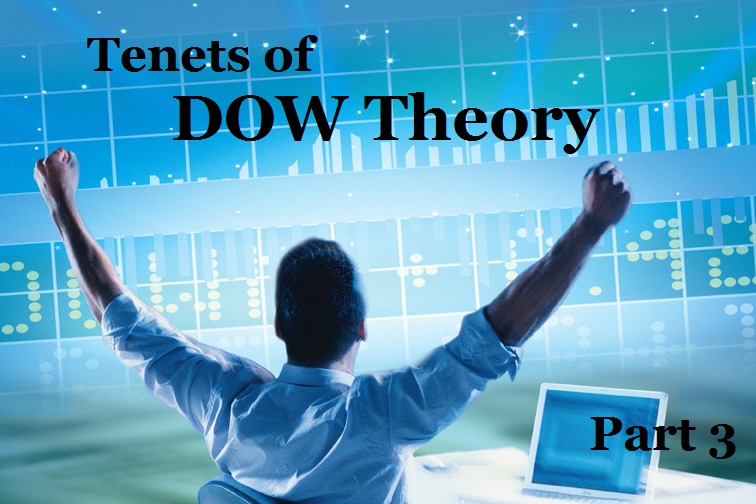
In our previous issues, we have discussed in detail the first two tenets of Dow Theory. Let us conclude the remaining four.
- The Principal of Confirmation
The theory requires both averages (Industrials & Railroads) to make new highs in order to declare a bull market. This requirement of confirmation is logically sound, as a new bull market must be corroborated by increased freight movement, which should be reflected in a rising Railroad index. Likewise, odds of an imminent bear market increase when both indicators make new lows. Therefore, cases when these two averages do not move in agreement are seen with suspicion.
However, these theories were proposed in the context of US markets, and in India, we do not have such a Transport Index as yet. So, what could be a good alternate to Railroad Index in Indian context? Let us assume that a bull market is accompanied by low interest rate regime. So a new high in Nifty should be supported by a new low in corporate or government bond yield. So, here is the clue. Since bank & auto sectors are most sensitive to interest rates, we can logically expect to see new highs in Bank & Auto indices to confirm a bullish opinion in Nifty. This is the same logic that required the two indices of Dow to move together.
- Volume Goes with the Trend
Volume adds credibility to price movement in both directions. A sustained bull market must be supported by increase in volume during rises and a bear market must see higher volume during declines.
There is no question about the wisdom of this statement, but in real life, volume is a wild animal to pet. Spikes in volume are erratic and trends are hardly as clear as prices, even in retrospect. So, in order to aid ourselves with an objective volume analysis, several volume oscillators can be recalled e.g, On Balance Volume, McClelan Oscillator, Elder’s Force Index etc. We wish to discuss their merits & demerits in due course of time.
- Only Closing Prices are Used for Analysis
Dow preferred closing prices to open, high or low of the day and we appreciate the logic behind it. Why is the closing price important? It is so because depending upon the closing price, money is transferred from loser’s to winner’s account to settle the mark to market adjustments at the end of a trading session. The closing price thus has a big psychological impact on a traders mind as it decides the winner and loser of the day.
Given the extremely complicated financial environment of our time, and when most of these markets run around the clock, one may argue that there is no closing price today. We do not agree. Every market does have a settlement price. This is usually at the end of a primary trading session (previously the pit or primary outcry session). The settlement price is necessary to reconcile all accounts, post profit & losses & trigger margin calls, if required. Moreover, banks worldwide could have not operated if there were no closing or settlement prices.
- A Trend is assumed to be continuing in force unless a Reversal is actually signaled
This is the basic philosophy of all trend following trading systems. Dow Theory leaves nothing to imagination as you need not predict a reversal of trend. A trend is a long term affair and it is always given the benefit of doubt when volatility obscures direction. The job of a Dow Theory follower is merely to react to change in trend and he has no business in predictive analysis.
Yes, it sometimes makes exit and entries delayed, leading to loss of profits. But in other times this rule has also helped in avoiding numerous costly whipsaw signals, preventing losses. Finally, over a century of history has proved it beyond doubt that although late to react, yet robustness of Classical Dow Theory is a priceless asset we need to harness.
Thus we complete our review of the 6 tenets of Dow Theory. In our next issue, we shall take up some examples in Nifty and try to analyze the trends in various time frame to aid our trading decisions.





Some Elementary Advice To Effectively Defeat Panic Attacks
Did you know that people with higher than normal intelligence are prone to panic attacks? If you experience these attacks, hopefully this knowledge along with the other helpful tips in this article will assist you with finding peace of mind in trying to deal with your situation.
[url=https://www.acheterviagrafr24.com/]https://www.acheterviagrafr24.com/[/url]